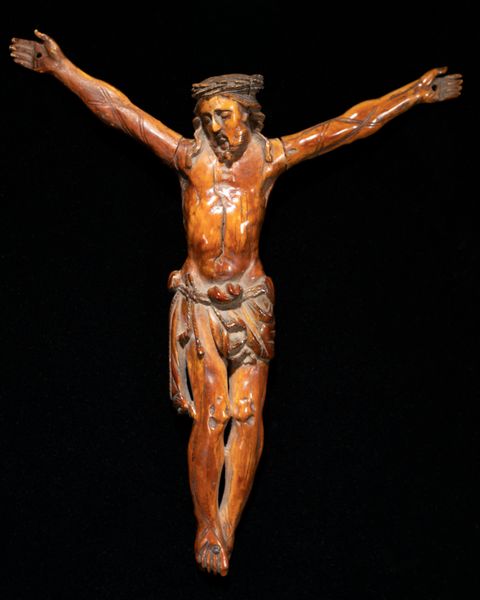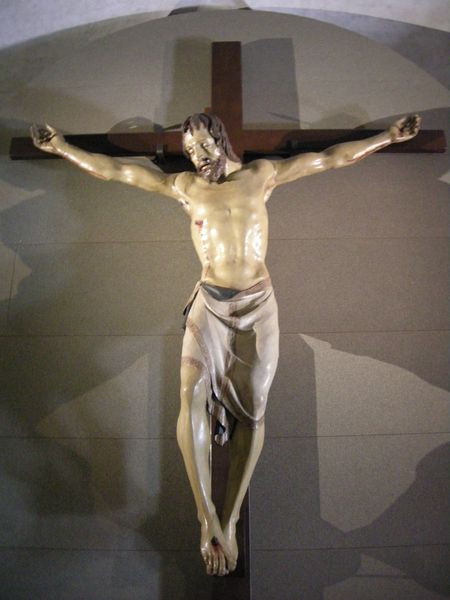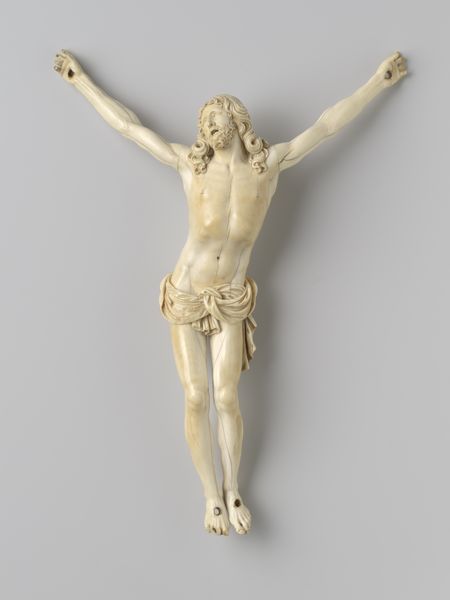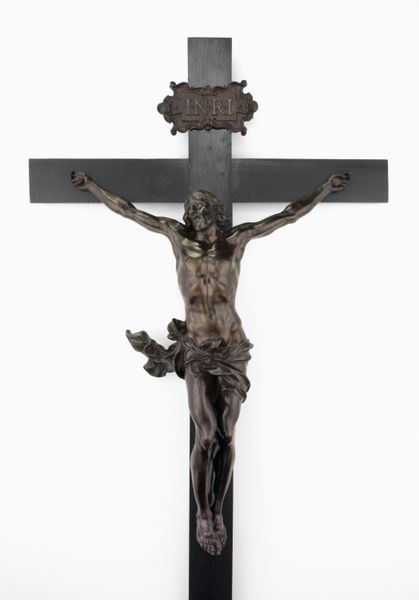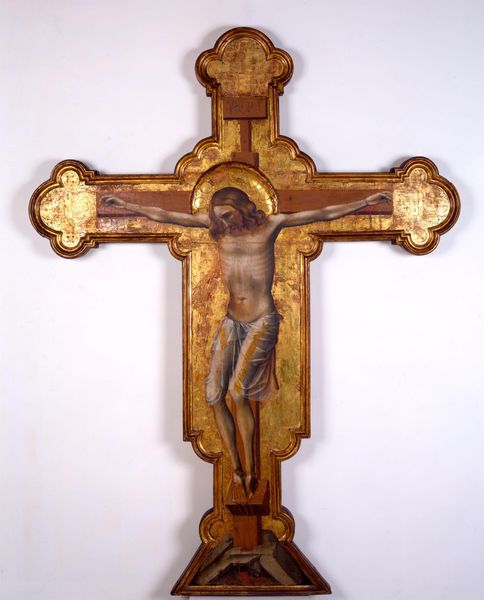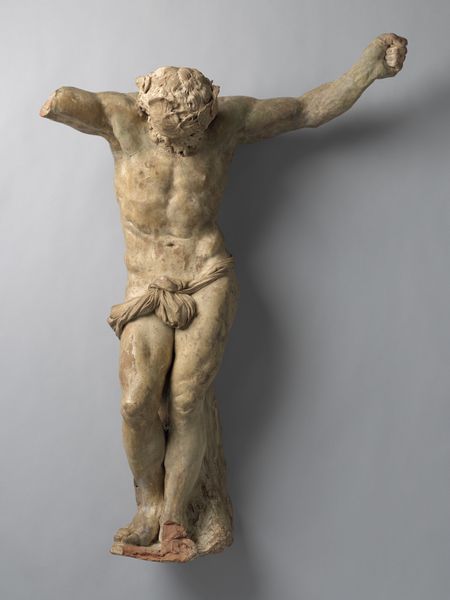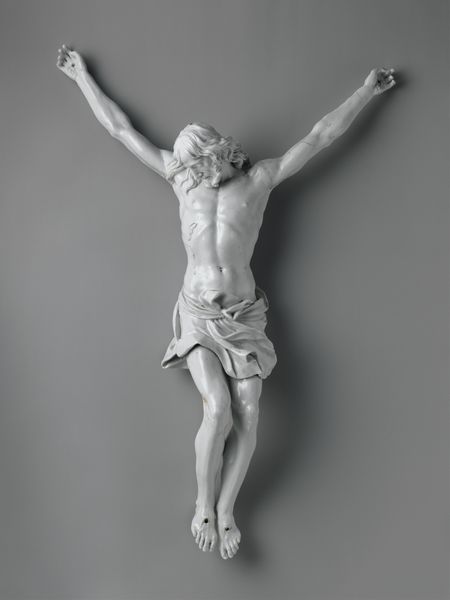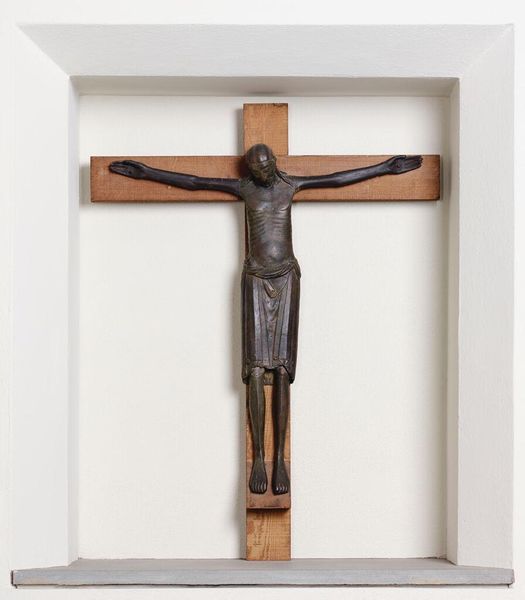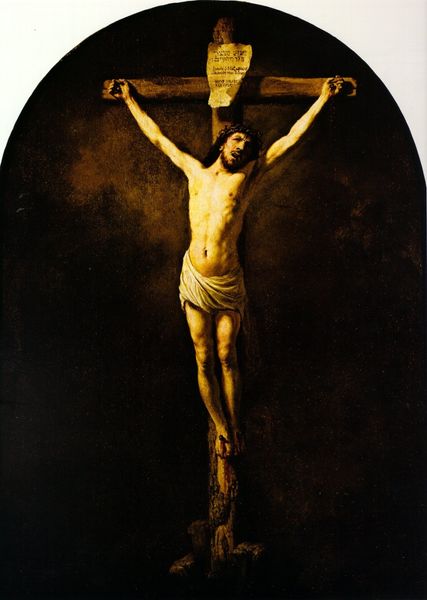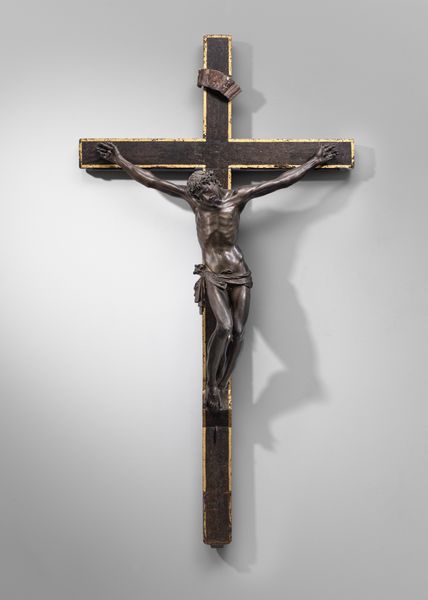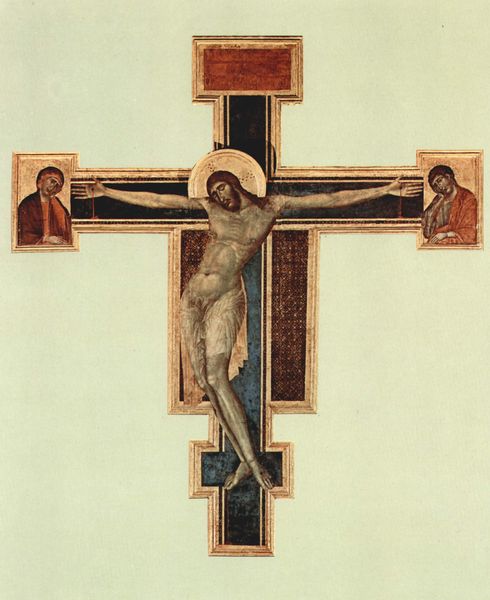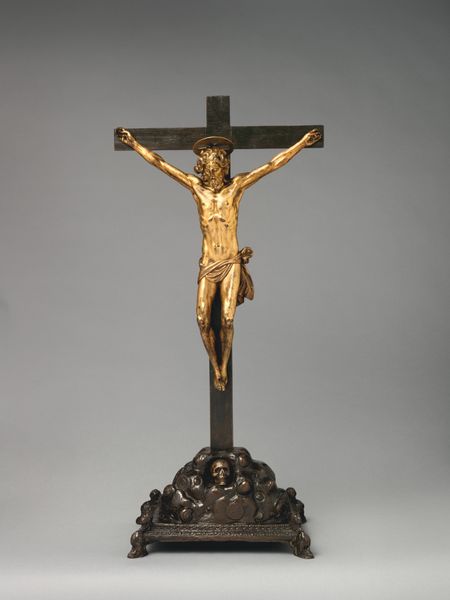
Dimensions: object: 740 x 725 x 170 mm
Copyright: © Frink Estate | CC-BY-NC-ND 4.0 DEED, Photo: Tate
Curator: Here we have Dame Elisabeth Frink's "Crucifix for a Lutheran Church," part of the Tate Collection. Editor: It's stark. The figure seems almost flayed, the musculature exaggerated. Curator: The form certainly dominates. Observe the textures, the way Frink models light and shadow. It yields to the eye, doesn't it? Editor: The figure’s gauntness speaks to the legacy of wartime trauma. This isn't mere artistic flourish. It reflects a societal wound. Curator: An interesting interpretation. One could also see the sculpture as an exercise in classical form. Editor: But divorced from its cultural moment? I think not. To ignore that is to miss its potency. Curator: Perhaps we're both right. It's a piece that invites multiple readings. Editor: It’s a testament to the enduring power of art to provoke discussion, even disagreement.
Comments
tate 6 months ago
⋮
http://www.tate.org.uk/art/artworks/frink-crucifix-for-a-lutheran-church-t07420
Join the conversation
Join millions of artists and users on Artera today and experience the ultimate creative platform.
tate 6 months ago
⋮
This plaster sculpture was made for a commission by St Mary's Lutheran Church in London, where the final bronze version can be found. Of the generation of post-war sculptors, Frink was most consistently in demand for such commissions. Religious subjects allowed her to investigate the theme of masculinity and the male body in various manifestations. Here Christ is seen as a thin, even gaunt, figure and Frink's typically raw treatment of the surface accentuates the sense of a body ravaged by pain. Nevertheless the figure also retains an aura of nobility. The visionary simplicity of the sculpture reflects Lutheran beliefs, inspiring contemplation without the distraction of excessive adornment. Gallery label, August 2004
